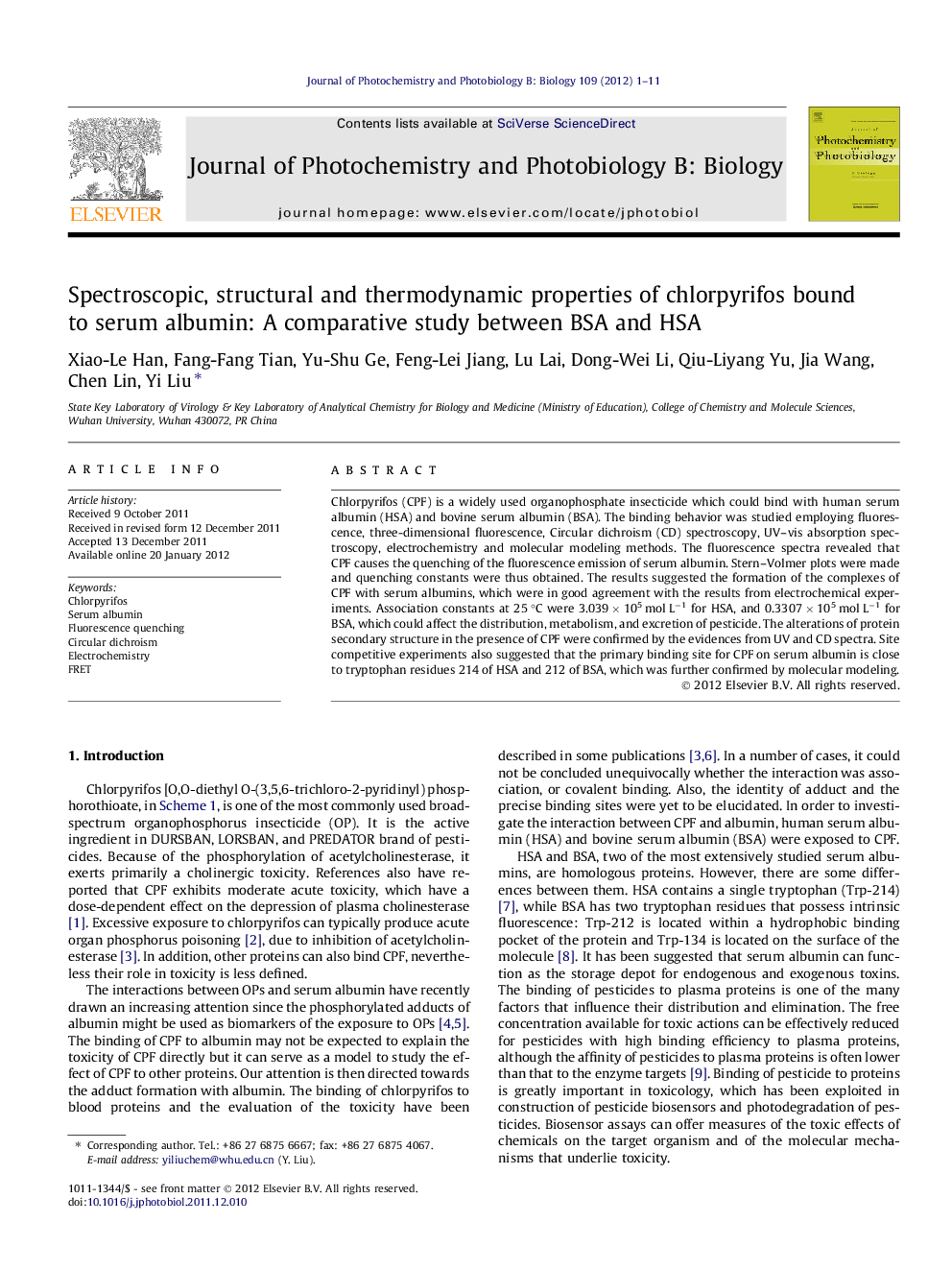| Article ID | Journal | Published Year | Pages | File Type |
|---|---|---|---|---|
| 30574 | Journal of Photochemistry and Photobiology B: Biology | 2012 | 11 Pages |
Chlorpyrifos (CPF) is a widely used organophosphate insecticide which could bind with human serum albumin (HSA) and bovine serum albumin (BSA). The binding behavior was studied employing fluorescence, three-dimensional fluorescence, Circular dichroism (CD) spectroscopy, UV–vis absorption spectroscopy, electrochemistry and molecular modeling methods. The fluorescence spectra revealed that CPF causes the quenching of the fluorescence emission of serum albumin. Stern–Volmer plots were made and quenching constants were thus obtained. The results suggested the formation of the complexes of CPF with serum albumins, which were in good agreement with the results from electrochemical experiments. Association constants at 25 °C were 3.039 × 105 mol L−1 for HSA, and 0.3307 × 105 mol L−1 for BSA, which could affect the distribution, metabolism, and excretion of pesticide. The alterations of protein secondary structure in the presence of CPF were confirmed by the evidences from UV and CD spectra. Site competitive experiments also suggested that the primary binding site for CPF on serum albumin is close to tryptophan residues 214 of HSA and 212 of BSA, which was further confirmed by molecular modeling.
Graphical abstractThe crystallographic analysis reveals that the principal regions of ligand binding to HSA are located in hydrophobic cavities in subdomains IIA and IIIA, respectively. There is a large hydrophobic cavity present in subdomain IIA to which many drugs can bind to, including pesticide.Figure optionsDownload full-size imageDownload as PowerPoint slideHighlights► Some toxic mechanism of CPF at molecular lever was provided. ► The mechanism of quenching might be a static quenching procedure. ► The hydrogen bonds and van der Waals forces play a major role for association.
